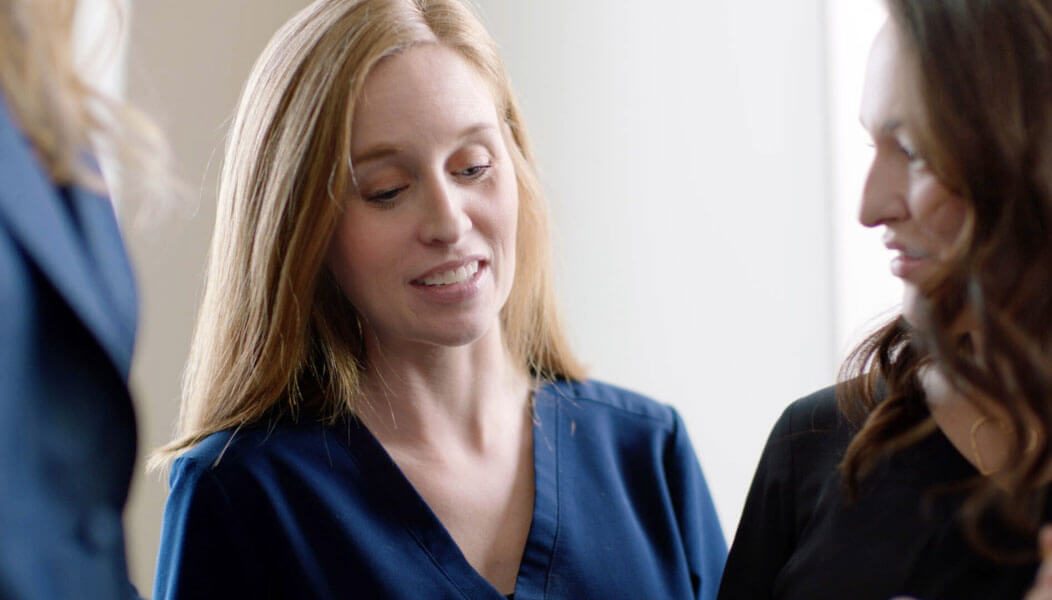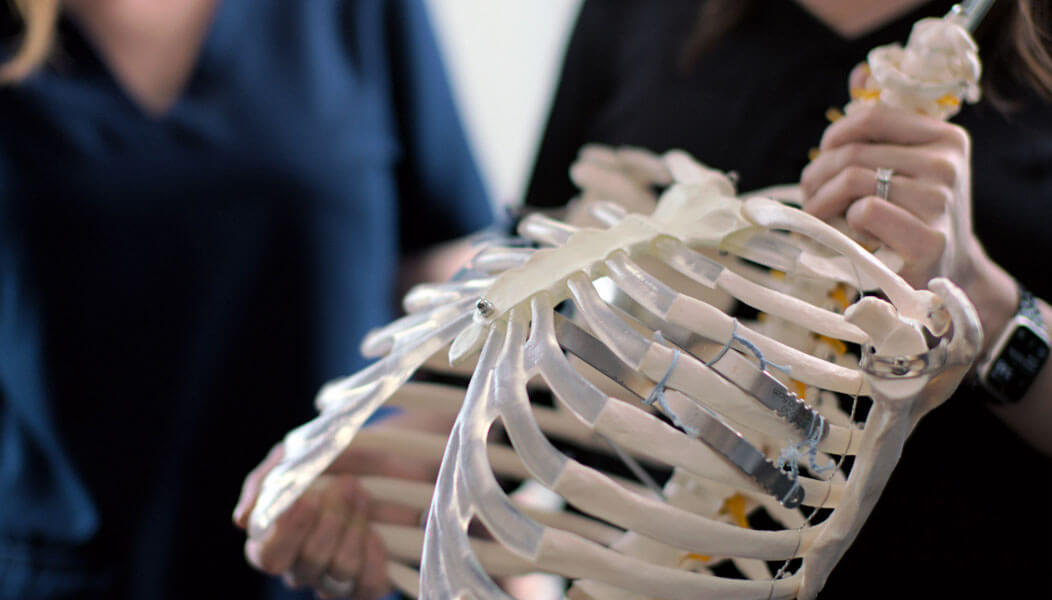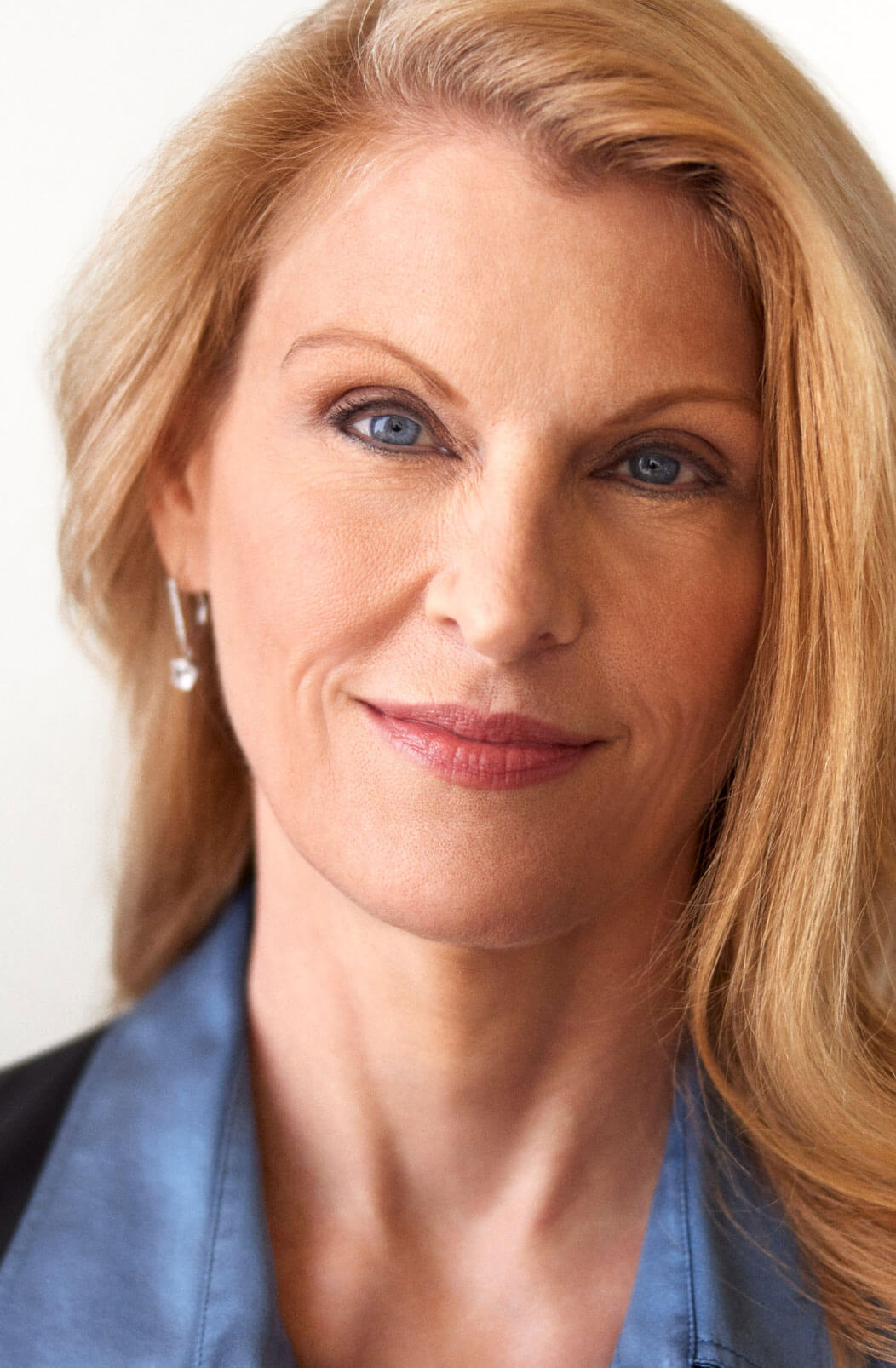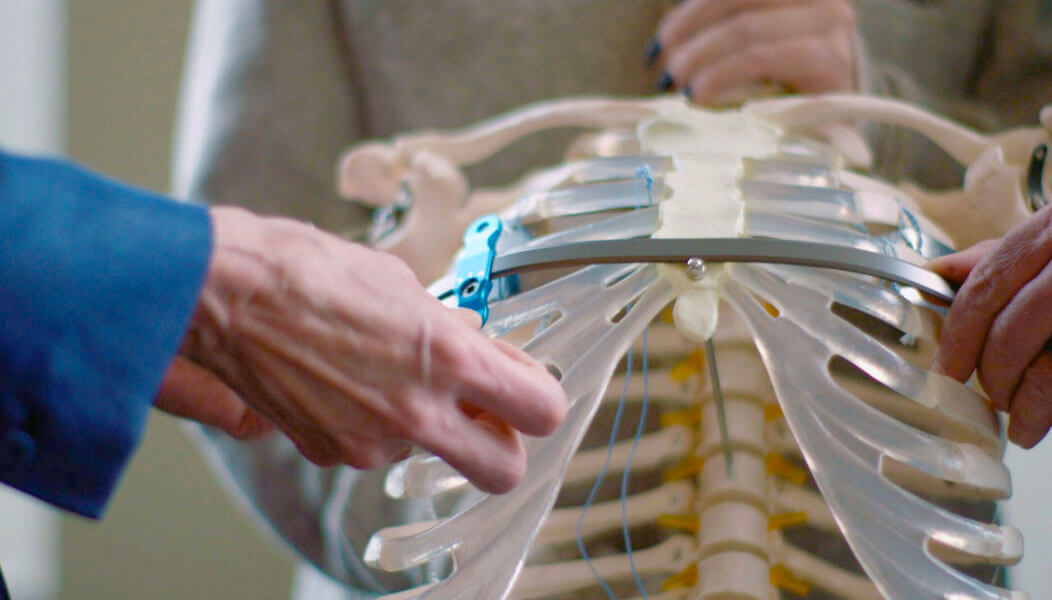Dr. Jaroszewski went to medical school to become a thoracic surgeon, completing her general surgery training at Mayo Clinic and ultimately joining the staff in 2006. “I’ve been here ever since. Getting here was a very long, deviated path, but it was one of those things that was very important to go through. When I was younger, I didn’t know what I wanted to do, and it took me a long time to figure it out. When I got there, it was perfect.”
Once she became a thoracic surgeon, she never looked back. “I created a niche,” she says. “One of the advantages of being at a place like Mayo Clinic is that you have the tools to develop a niche.” What Dr. Jaroszewski does better than anyone else is treat adult pectus excavatum, a congenital deformity caused by abnormal growth of the connective tissue that joins the ribs to the breastbone, causing the sternum to grow inward. This condition can lead to serious crowding and a sunken, concaved chest cavity.


“A lot of people treat kids with pectus excavatum because when you’re young you’re very flexible,” she says. “You have a lot of cartilage in the chest wall, so it moves easily. That elasticity allows for braces to be put in the chest cavity to correct the deformity. Much like braces do with teeth. As people age, they’re not as flexible. And patients are told, ‘You’re too old. We can’t move your bones, so you’re stuck with this. Or we can cut these bones out to correct the problem.’”
Choosing between a horribly painful procedure and nothing wasn’t much of a choice to Dr. Jaroszewski. “We discovered a better way. We just had to change the way the procedure was done,” she explains. “We developed new techniques to manipulate the chest cavity so we could put braces on adults to make it a much more reasonable procedure.”
A world of possibilities opened for Dr. Jaroszewski and her patients. “Suddenly, there were all these adult patients who could have their pectus corrected; patients whose chest wall was caved in, putting pressure on their heart and their lungs. Patients who told me they woke up every day of their life with a panic attack, because they felt like they couldn’t breathe. Patients who couldn’t walk up a flight of stairs without feeling like they were going to throw up and pass out.”

We discovered a better way. We just had to change the way the procedure was done.”
“And now they are normal,” she says. “They can take a deep breath for the first time in their lives. It’s literally life changing.” Because the surgery is so transformational, Dr. Jaroszewski is passionate about educating other physicians about the procedure. “It has been slower to get the word out than I hoped. Unfortunately, if a patient talks to their primary care doctor, and if they don’t know this procedure exists, they may tell that person, sorry, there’s nothing we can do — you have to live with this.”

“I’ve been trying to educate physicians for decades because they’ve been taught this is a cosmetic disorder,” she says. “But Mayo Clinic has the cardiology reports showing it’s not cosmetic. We have the echocardiography; we have the cardiopulmonary results. We’ve published that data; now we just have to get people to read it. Our pectus excavatum patients are saying how much it helps them. But it’s a matter of getting the word out and teaching other surgeons the techniques so that they can help patients too.”
In the end, Dr. Jaroszewski thinks about it this way: “What’s important to you and what makes you feel important?” she says. “What connects you to other people? What gives you a purpose in life? It’s different for every person. For some of us, like me, it takes a long time. But being a thoracic surgeon is fantastic.”
“If someone is literally suffocating in their chest, I can, in a matter of hours, fix that problem,” she says with a huge smile on her face. “The same is true for patients with cancer. You perform surgery, remove a tumor, and you fix that problem. Who else gets to do that? It’s a huge honor. What a gift to help somebody.”